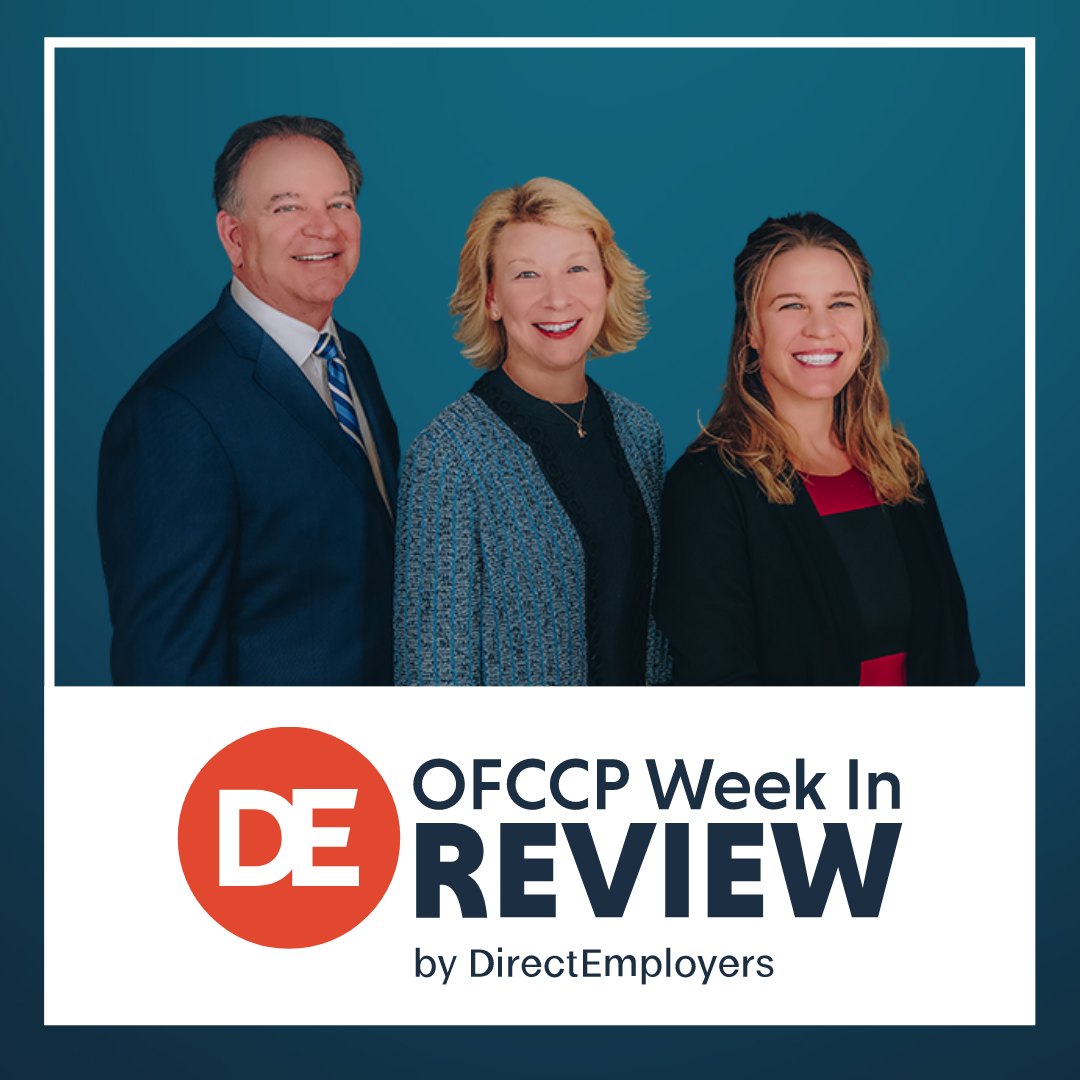 The DE OFCCP Week in Review (WIR) is a simple, fast and direct summary of relevant happenings in the OFCCP regulatory environment, authored by experts John C. Fox, Candee Chambers and Jennifer Polcer. In today’s edition, they discuss:
The DE OFCCP Week in Review (WIR) is a simple, fast and direct summary of relevant happenings in the OFCCP regulatory environment, authored by experts John C. Fox, Candee Chambers and Jennifer Polcer. In today’s edition, they discuss:
- This Week’s Vaccination Injunction Puzzle at a Glance
- Earn Professional Development Credits by Attending E-Verify and Form I-9 Webinars
- VETS Extends Transition Training Program to Include Veterans
- USDOL Announced a Funding Opportunity to Assist Veterans Combat Homelessness/Return to the Workforce
- OFCCP and EEOC Announce a Joint Hiring Practices Initiative
- U.S. Supreme Court Stayed Implementation of the OSHA ETS: What It Means For Employers
- SCOTUS Allowed Enforcement of the CMS Interim Final Vaccination Rule; Healthcare Facilities Subject to Vaccine Mandate for Medicare/Medicaid Staff
- Clarification on The New Minimum Wage For Some Federal Government Contractors
- A User’s Guide: What Employers Should Know When Implementing a Private Vaccine Mandate Policy
- Processing Vaccination Accommodation Requests Under The ADA
- USDOL Adjusted Civil Monetary Penalties Per Inflation Adjustment Act
This Week’s Vaccination Injunction Puzzle at a Glance:
OSHA Emergency Temporary Standard (“ETS”): Supreme Court Stays Implementation of OSHA ETS; Private Employers No Longer Required to Comply with It
- The Supreme Court on Thursday stayed the OSHA ETS as an act beyond the legal authority of OSHA (Occupational Safety and Health Administration) to issue (see below)
- OSHA has yet to indicate how the Supreme Court’s striking down of the ETS will alter its proposed Final Standard. Until OSHA withdraws the proposed Final Standard it published in the Federal Register, comments related to any aspect of the vaccination, testing, and face covering requirement as a Final Standard applicable to any business subject to OSHA jurisdiction are still due on January 19, 2022
- The Supreme Court’s ruling does not impact OSHA’s request to authorize for another three years the recordkeeping requirements in the Healthcare ETS it previously issued. Anyone wishing to comment has until January 31, 2022 to submit their comment and recommendation
- An apparently angry Secretary of Labor Marty Walsh issued a tough statement on the heels of the SCOTUS decision knocking down his OSHA ETS.
“I am disappointed in the court’s decision, which is a major setback to the health and safety of workers across the country. OSHA stands by the Vaccination and Testing Emergency Temporary Standard as the best way to protect the nation’s workforce from a deadly virus that is infecting more than 750,000 Americans each day and has taken the lives of nearly a million Americans.”
Then, the statement first politely urged employers to require their employees to be vaccinated. But then the tone changed abruptly, threatening employers with not only OSHA enforcement actions but suggesting the fight was not over and that OSHA was still in the middle of a proceeding not yet finished:
The Polite Urging:
“We urge all employers to require workers to get vaccinated or tested weekly to most effectively fight this deadly virus in the workplace. Employers are responsible for the safety of their workers on the job, and OSHA has comprehensive COVID-19 guidance to help them uphold their obligation.”
The Tough-Guy Enforcement Threat:
“Regardless of the ultimate outcome of these proceedings, OSHA will do everything in its existing authority to hold businesses accountable for protecting workers, including under the COVID-19 National Emphasis Program and General Duty Clause.”
Obviously, someone along the editing path of this Press Release (called a “statement,”) probably at the White House, just had to add that last paragraph and throw that last jab at employers and feign that the Administration had not lost the mandatory vaccination battle just yet (“Regardless of the ultimate outcome of these proceedings…”). USDOL Press Releases are usually much more genteel, even while reminding the reader of the Department’s enforcement capabilities (the proverbial “iron fist in a silk glove”). The Secretary’s threat to attempt to prosecute “General Duty Clause” violations for an employer’s refusal to require mandatory employee vaccinations is not, however, as crazy as it sounds to non-OSHA lawyers. This is actually possible, and indeed the OSH Act INTENDED and ANTICIPATED such a counter-intuitive result. We describe this phenomenon, below, in our story about private company vaccination mandates and the OSH Act’s General Duty Clause.
Nonetheless, the last paragraph of this Press Release was a very odd public statement born of an emotional response to a legal defeat, but which the White House views as a bitter political loss.
Medicare/Medicaid Service Provider CMS Vaccine Mandate: Supreme Court Allows Continued Implementation of CMS Vaccine Mandate; Healthcare Facilities Receiving Medicare and/or Medicaid payments Now Must Comply in All 50 States
- On the same day the Supreme Court struck down the OSHA ETS, the Supreme Court lifted the injunctions previously issued, allowing the CMS Interim Final Rule to go into effect. The Court held the Interim Final Rule falls within the authority Congress conferred upon the HHS Secretary (see below)
Federal Contractor/Subcontractor Vaccine Mandate Enjoined: 11th Circuit Decision Upheld a Lower Court Injunction; OMB Vaccination Mandate Shut Down Order Thus Remains in Place
- No new developments this week as to the federal contractor/subcontractor vaccine mandate; it remains enjoined and shut down pending the Biden Administration’s decision to either appeal the injunctions or publish a new Rule
Federal Employee Vaccine Mandate Case: First Cracks Appear in Permitting Federal Employee Vaccine Mandate
- No update from last week
Head Start Program Vaccination and Masking Rule: Two District Courts Grant Injunctions Preventing Implementation of Vaccine and Masking Rule for Head Start Staff and Students in 25 States
- No update from last week
Tuesday, January 11, 2022: Earn Professional Development Credits by Attending E-Verify and Form I-9 Webinars

Hosted by U.S. Citizenship & Immigration Service employees, these webinars are the trusted source for employment verification education and offer best practices, compliance measures, roles, responsibilities, and resources.
Tuesday, January 11, 2022: VETS Extends Transition Training Program to Include Veterans

The Off-Base Transition Training pilot program begins January 18, 2022. It offers ten, two-hour, instructor-led employment skills and workforce development workshops for veterans, including veterans serving currently in the Reserve Component (National Guard and Reserve members) and their spouses.
VETS will start the pilot at eight locations selected based on current annual unemployment data from the Bureau of Labor Statistics. VETS has thus far announced only these five initial pilot sites, but intends to announce at least another 45 sites:
- Los Angeles and San Diego, California;
- Boston, Massachusetts;
- Fayetteville, North Carolina;
- Pittsburgh, Pennsylvania; and
- Houston, Dallas, and San Antonio, Texas.
Employment Resource Coordinators will offer referral services to local agencies, such as American Job Centers (where federal Government contractors list their jobs for VEVRAA compliance) and interested partner organizations that meet the requirements needed to host workshops. Organizations interested in hosting workshops should contact VETS-OBTT@dol.gov or their VETS’ state director.
Wednesday, January 12, 2022: USDOL Announced a Funding Opportunity to Assist Veterans Combat Homelessness/Return to the Workforce
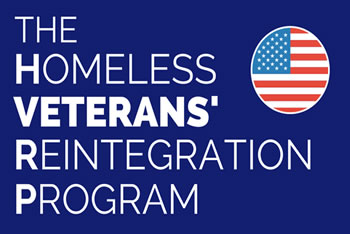
The awards are part of the VETS’ Homeless Veterans’ Reintegration Program (HVRP). The program has two core objectives to:
- provide services to assist reintegrating homeless veterans into meaningful employment within the labor force, and
- stimulate the development of effective service delivery systems which will address the complex problems facing homeless veterans.
What Services Would an Organization Need to Provide to Receive a Grant?
Grant recipients must address the complex employment-related requirements and support services necessary to meet the needs of veterans combating homelessness. Organizations that provide either direct services or a robust referral system establishing tools, resources, and partnerships to identify, recruit, prepare, and support veterans experiencing homelessness for employment success may qualify for a grant.
Qualifying support services may include, but are not limited to, career counseling, resume preparation, job placement, and other related services. Employment-related requirements may include, but are not limited to, job training, job development, apprenticeships, and other skills development services.
Who Should Apply for a Grant?
HVRP awards grants on a competitive basis to both nonprofit and for-profit organizations, public and private institutions of higher education, state and local workforce investment boards, tribal governments, and faith-based and community organizations.
Federal Government Contractors
For Federal Government contractors, applying for or connecting with the grant recipients is a win-win in affirmative action efforts to hire and support veterans. Organizations could use funding to boost the efforts of existing veteran recruitment and hiring programs or build these programs if not currently in place. The other opportunity is to connect with the grant recipients who will actively support veterans experiencing homelessness. Connect with these organizations and provide job training and opportunities. Help serve those who have served!
Application Details
Interested organizations may apply online. The application deadline is February 23, 2022.
Wednesday, January 12, 2022: OFCCP and EEOC Announce a Joint Hiring Practices Initiative
The Office of Federal Contract Compliance Programs (OFCCP) and the U.S. Equal Employment Opportunity Commission (EEOC) announced a joint initiative to “reimagine” hiring practices in ways that advance equal employment opportunity and aim to help provide access to good jobs. The assumption underlying the initiative is that employer hiring practices are at fault for “underrepresented communities” even as almost three million available jobs per day go begging and unfilled.
The Hiring Initiative to Reimagine Equity (HIRE) is a multi-year collaborative effort that will engage a broad array of stakeholders to expand access to good jobs for workers from underrepresented communities and help address critical hiring and recruiting challenges.
HIRE Initiatives
- Reimagine equity and expand opportunities in hiring by hosting roundtables to discuss organizational policy and practices
- Identify strategies to remove unnecessary barriers to hiring, and to promote effective, job-related hiring and recruitment practices to cultivate a diverse pool of qualified workers;
- Promote equity in the use of tech-based hiring systems; and
- Develop resources to promote the adoption of innovative and evidence-based recruiting and hiring practices that advance equity.
See also the HIRE Fact Sheet.
The Launch
OFCCP and EEOC will hold a virtual public roundtable on January 19, 2022, at 2 pm EST to commemorate Martin Luther King, Jr. Day and launch the initiative.
Roundtable Speakers
OFCCP
- Jenny R. Yang, Director
EEOC
- Charlotte A. Burrows, Chair
- Jocelyn Samuels, Vice Chair
Other
- Sindy Benavides, CEO, League of United Latin American Citizens
- Kathleen Lundquist, President and CEO, APT Metrics
- Fred Redmond, Secretary-Treasurer, AFL-CIO
- Veta Richardson, President and CEO, Association of Corporate Counsel
- Lola Smallwood Cuevas, Project Director and Founder, Los Angeles Black Worker Center, UCLA Labor Center
- Cid Wilson, President and CEO, Hispanic Association of Corporate Responsibility
Thursday, January 13, 2022: U.S. Supreme Court Stayed Implementation of the OSHA ETS: What It Means For Employers
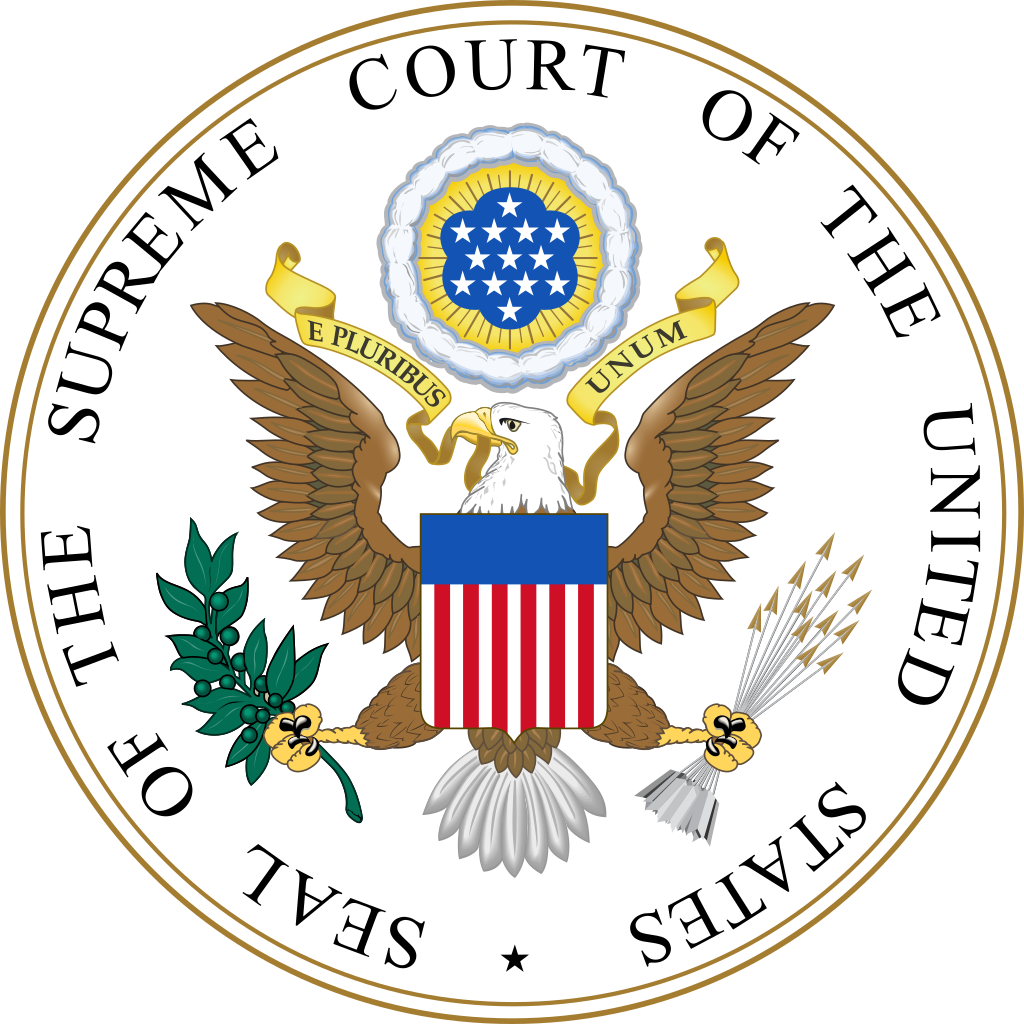
HOWEVER, the decision now opens the door to questions whether both individual employers and states (perhaps “Blue” states) will impose local vaccination mandates of their own making. Nothing in the SCOTUS decision stops private employer vaccination requirements which the lower federal courts continue to uphold. See related story in this Week In Review.
In its opinion, a majority of the Court determined private business interests and states applying for a stay of the OSHA ETS were likely to succeed on the merits of their claim based on the finding that the Secretary of Labor, through OSHA, lacked delegated authority to impose the ETS. Specifically, the Court found Congress failed to specifically authorize OSHA to exercise such a broad and expansive power. While the Occupational Safety and Health Act (“OSH Act”) empowers the Secretary of Labor to set workplace safety standards, the ETS is a broad public health measure that impermissibly addresses a hazard the American public faces generally everywhere and not specific to the workplace. In other words, COVID-19 is not an occupational hazard that would permit the issuance of the ETS.
Additionally, in a section of the SCOTUS’ opinion that mirrors the issue Justice Amy Coney Barrett raised in her questioning during oral argument about the overbroad and “one-size-fits-all” nature of the ETS, the Court noted that its ruling did not imply that OSHA lacked authority to regulate occupation-specific risks related to COVID-19. Rather, the ETS’ indiscriminate approach in setting a uniform standard regardless of work environment or occupation defines the ETS as a public health measure rather than an occupational one.
In a written concurrence joined by Justice Clarence Thomas and Justice Samuel Alito, Justice Neil Gorsuch also concluded that the question of whether the government should impose vaccination requirements rests not with OSHA as a regulatory agency. Rather, Justice Gorsuch contended that a law imposing vaccination is the responsibility of state and local governments, or the elected representatives in Congress. Otherwise, granting such broad powers to OSHA to issue sweeping health standards would result in OSHA being able to regulate almost anything through the use of an ETS. Justice Gorsuch’s opinion is in keeping with his judicial philosophy as to three main points:
- First, the task of making laws falls solely with legislative bodies that are the elected representatives of the governed;
- Second, general police powers related to protecting the health of the citizenry rest with state or local government as the powers of the federal government are limited and divided; and
- Third, the federal courts must be cautious when allowing the continued expansive growth of an unelected administrative state (as a practical matter, this entails strengthening the “non-delegation doctrine” (which limits the power of the Executive Branch to those powers the U.S. Constitution enumerates, or the Congress has specifically delegated to the President by statute). Moreover, Justice Gorsuch made the case to limit, in a future case, the breadth of the SCOTUS’ prior Chevron decision that directed the federal courts to defer to a federal agency Rule at-issue in a lawsuit unless the Rule was “plainly” at variance with the statute the Congress had passed delegating the right and obligation to the agency to then enforce the statute).
Unsurprisingly, the three liberal justices on the Court issued a withering dissent that expressed incredulous disdain for the Court’s belief that COVID-19 is not a grave danger requiring protection of America’s workers. Specifically, the dissenters took the approach that the “ends justified the means” and opined that the Court should have deferred to OSHA because the Court lacked the expertise to evaluate the scientific bases of the health and safety issues at stake. The contempt the dissent had for the opinion of the Court is best summed up in their own words:
“When we are wise, we know enough to defer on matters like this one. When we are wise, we know not to displace the judgments of experts, acting within the sphere Congress marked out and under Presidential control, to deal with emergency situations. Today, we are not wise.”
With the Court’s ruling, private employers with 100 or more employees no longer need to implement vaccination policies to comply with the ETS. Additionally, smaller employers concerned with a potential Final Standard OSHA proposed that would expand compliance to all businesses subject to OSHA jurisdiction are now free of such worry. The question facing private employers now is whether they wish to privately institute vaccination requirements now that OSHA no longer provides cover as the “bad guy” forcing compliance. Entities concerned about the increased business disruption that occurs from infection of unvaccinated employees who are more susceptible to infection and prolonged absences due to the increased risk of hospitalization, may wish to implement a vaccine policy. Since such a policy would not be driven by government mandate, but rather as a term and condition of employment within an employer’s right to contract, employers are more likely to be successful in instituting their own policy if they desire. See related story, below.
Thursday, January 13, 2022: SCOTUS Allowed Enforcement of the CMS Interim Final Vaccination Rule; Healthcare Facilities Subject to Vaccine Mandate for Medicare/Medicaid Staff

In its opinion, the Court noted that Congress authorized HHS to impose conditions on the receipt of Medicaid and Medicare funds that are necessary “in the interest of the health and safety of the individuals who are furnished services.” Thus, because a COVID-19 mandate would substantially reduce the likelihood that healthcare workers contract the virus and transmit the same to patients, many of whom are especially vulnerable to serious consequences from the disease, the Rule “fits neatly within the language of the statute.” Indeed, the Court cited various vaccines healthcare workers are already required to receive.
The Court rejected the arguments of those attempting to enjoin enforcement of the Rule by noting that the broad language HHS relies upon is more than “bureaucratic rules” regarding the technical administration of the programs. Rather, CMS had previously used this same language to obligate healthcare facilities to satisfy many conditions that address the “safe and effective provision of healthcare.” Examples include the amount of time within which a patient must be examined, the procurement and transplantation of organs, and programs hospitals must implement to govern the surveillance, prevention, and control of infectious diseases.
The Court also rejected the contention that the Rule violated the federal Administrative Procedure Act. This was not a case in which the Department failed to undergo Rulemaking, but rather the challenge centered on whether the vaccination mandate Rule was “arbitrary and capricious.” Proving a federal administrative law is “arbitrary and capricious” is very difficult because it requires a very high standard of proof to allow the federal agencies leeway to interpret the Congressional statutes they are charged to enforce. Most successful APA lawsuits challenge a Proposed or Final federal Rule as “not otherwise in accordance with law.” Those legal attacks claim the at-issue Proposed or Final Rule is unlawful either because the agency lacks the raw legal authority to promulgate and enforce the Rule, or the agency has just flat failed to engage in Rulemaking (posting a proposed Rule for public “Notice” and thereafter receiving public “Comment”) to further aid the agency’s deliberations as it hardens its Proposal into a Final Rule.
Specifically, SCOTUS held that HHS’ implementation of the Rule was reasonable, and neither arbitrary nor capricious. First, HHS’ issuance of the Rule in advance of the winter flu season constituted the “something specific” necessary to allow for an “Interim” Final Rule. SCOTUS thus found it unnecessary for HHS to undergo the usual Notice and Comment requirement typically otherwise required in advance of the imposition of a Rule. Second, the Court found HHS sufficiently examined the relevant data to articulate a satisfactory explanation for the decision to impose a vaccine mandate in contradiction of its initial approach to merely encourage vaccination, and to also require vaccination of those individuals who had obtained only “natural immunity.” Finally, HHS’ failure to prepare a regulatory impact analysis did not violate federal law given that this requirement attaches only to the issuance of a Final Rule, whereas the Rule here was merely only an interim Rule.
In his dissent, joined by Justices Alito, Gorsuch, and Barrett, Justice Thomas believed that HHS failed to establish that the two statutory provisions HHS relied upon empowered it to impose a vaccine mandate. Rather, the statutory provisions pertained to the practical management and direction of Medicaid and Medicare programs, to which the mandate had no connection in their opinion. This opinion is further evidence of a solid block of four Justices who wish to narrow the “non-delegation doctrine” (see parallel discussion in the OSHA ETS story, above) to allow federal Executive action to occur in response to only a narrow and specific mandate from the Congress to the Executive Branch of the federal government.
Furthermore, Justice Thomas believed HHS had not adequately explained why Congress would have used “ancillary” provisions in the statute to grant such an expansive exercise of power without explicit authorization. Such a broad grant of authority required Congress to “speak clearly when authorizing an agency to exercise powers of vast economic and political significance.” (Citations omitted).
In a separate dissent, Justice Alito (joined by Justices Thomas, Gorsuch, and Barrett) noted his skepticism the Federal Government possessed sufficient authority to compel vaccination of over 10 million healthcare workers. Even if the Federal Government did have such authority, Justice Alito argued the enactment of the Rule was arbitrary and capricious in violation of the Administrative Procedure Act’s requirements.
Following the ruling, the injunction in 25 states that previously existed to stop implementation of the CMS Interim Final Rule is no longer operative. Healthcare facilities in those 25 states must therefore now comply with the December 28, 2021 Guidance the CMS issued regarding implementation of the Rule. The timeline set forth in the Guidance, which we previously discussed here, is now operative in all 50 states and the District of Columbia. Healthcare facilities should now implement policies needed to achieve the 100% vaccination goal within the timeline set in CMS’ December 28, 2021 Guidance.
Thursday, January 13, 2022: Clarification on The New Minimum Wage For Some Federal Government Contractors
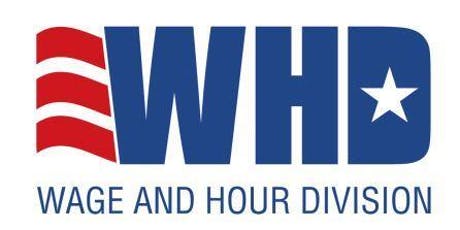
The FAB explains the $15 minimum wage requirement and clarifies changes to minimum wage requirements for contract workers in tipped occupations and workers with disabilities employed on covered contracts under Section 14(c) of the Fair Labor Standards Act.
The FAB identified four categories of covered contracts:
- procurement contracts for construction the Davis-Bacon Act (DBA covers);
- service contracts the Service Contract Act (SCA covers);
- concessions contracts; and
- contracts entered into with the federal government to use federal property or lands to offer services to Federal employees, their dependents, or to the public.
The FAB also defined covered employees under the headings of “Workers whose wages under the contract are governed by the FLSA, SCA, or DBA” and “Workers employed on or in connection with a covered contract.”
Other clarification topics include the Geographic Scope, Excluded Contracts, Dollar Threshold, New Contracts, Minimum Wage Rates, Tipped Employees, Notice to Workers, Flow-down of Clauses, Recordkeeping, Anti-Retaliation, and Remedies.
Effective Date
The new rates are effective on January 30, 2022.
Additional Resources
The Wage and Hour Division has a landing page with several resources, including a side-by-side comparison of EO 13658 (Obama Administration) and EO 14026 (Biden Administration).
Friday, January 14, 2022: A User’s Guide: What Employers Should Know When Implementing a Private Vaccine Mandate Policy
Now that the U.S. Supreme Court has struck down the OSHA ETS requiring vaccination or weekly testing for private employers with 100 or more employees, many private sector businesses may choose to implement a vaccination mandate policy on their own. Private employers should be aware of the below information to ensure they create legally compliant vaccination requirements, including supporting case law, state-by-state limitations, and practical tips to help draft thoughtful and compliant mandatory vaccination policies.
First, Let’s Recap the Reasons to Implement a Private Vaccination Mandate Policy
There are numerous reasons why an employer may decide to require its employees to be vaccinated. Some employers, in anticipation of the OSHA ETS, already instituted policies or mandates in compliance with the ETS and may wish to avoid “whiplash” among its workforce in changing its policy yet again. Still others may wish to implement vaccine requirements because of their belief it is good policy or wishing to reduce the potential for business disruption from increased absences of staff and greater threat of hospitalization, serious infection and longer hospital stays.
Other employers may wish to impose a vaccination and/or mask mandate out of concern for potential future government action seeking to protect employees from COVID-19 infections. This could include Congressional action, which Justice Neil Gorsuch noted in his concurring opinion in National Federation of Independent Business, et al. v. OSHA, et al., Case No. 21A244 (January 13, 2022). But that seems unlikely in a Congress which cannot seem to even agree when it is High Noon.
Alternatively, state, or local statutes could mandate vaccinations. If so, the Courts will give those vaccination mandates greater deference pursuant to a state’s inherent police power. See, Jacobson v. Massachusetts, 197 U.S. 11 (1905). Or employers may be concerned about the Department of Labor’s stated threat to potentially enforce vaccination as a violation of OSHA’s General Duty Clause of the OSH Act following the Supreme Court’s ruling. That clause requires businesses to provide a workplace “free from recognized hazards that are causing or are likely to cause death or serious physical harm.” Here is what John Fox wrote in 1977 (back when he first became a practicing OSHA lawyer) to describe the “General Duty Clause” in the first book in this country published on OSHA, a two-volume treatise the New York Law Journal Press titled: “A Practical Guide to the Occupational Safety and Health Act: Law Principles & Practices” (citing to OSHA’s Legislative history):
“The general duty clause [what became Section 5(a)1 of the OSH Act] in this bill would not be a general substitute for reliance on standards but would simply enable the Secretary to ensure the protection of employees who are working under special circumstances for which no standard has yet been adopted.” p. 114, Vol 1.
So, while it seems preposterous to those not trained in OSHA General Duty Clause case law decisions, it is entirely feasible for OSHA to bounce back and argue, employer-by-employer, that “special circumstances” exist requiring mandatory vaccinations, testing, and face masks. The Secretary could go after vaccination mandates “retail,” rather than “wholesale” via a standardized Vaccination Rule. Indeed, the Secretary’s attempt in its OSHA ETS to regulate public health generally, rather than focus its Rule down to the safety and health risks employees face in the workplace, was part of the problem the SCOTUS cited in striking down the OSHA ETS. See our story above reporting the SCOTUS ETS opinion. Indeed, SCOTUS credited the CMS at HHS for closely focusing its Interim Final Vaccination Mandate Rule on the health care provider industry.
Following Secretary of Labor Marty Walsh’s threat in his post-decision “statement” to enforce General Duty Clause vaccination violations, (see Puzzle Box, above) employers with “special circumstances” are now on notice: “OSHA is coming,” with violation citations in hand. The problem is most employers do not have the foggiest idea what “special circumstances” give rise to a General Duty Clause violation in the absence of a specific OSHA standard. The “special circumstance” which comes immediately to my mind is NFL Football. Guys breathing heavily on each other, colliding with each other often, regularly including dog piling, standing side-by-side and belly-to-butt on the sidelines, and for hours on the field. This is even before you think about the pre-game and the post-game locker rooms, and shared shower rooms with dressing room closets causing players to line up shoulder-to-shoulder to undress, dress-out, undress, and dress again. Or, if they happen to be playing “away,” getting back on the team bus, or team airplanes, again in close confines in shared air. OSHA could have a field day with that “special circumstance.”
Click the image below to explore the conditions employers should consider for implementing a private vaccine manage policy in this week’s bonus blog feature.
Friday, January 14, 2022: Processing Vaccination Accommodation Requests Under The ADA

Friday, January 14, 2022: USDOL Adjusted Civil Monetary Penalties Per Inflation Adjustment Act
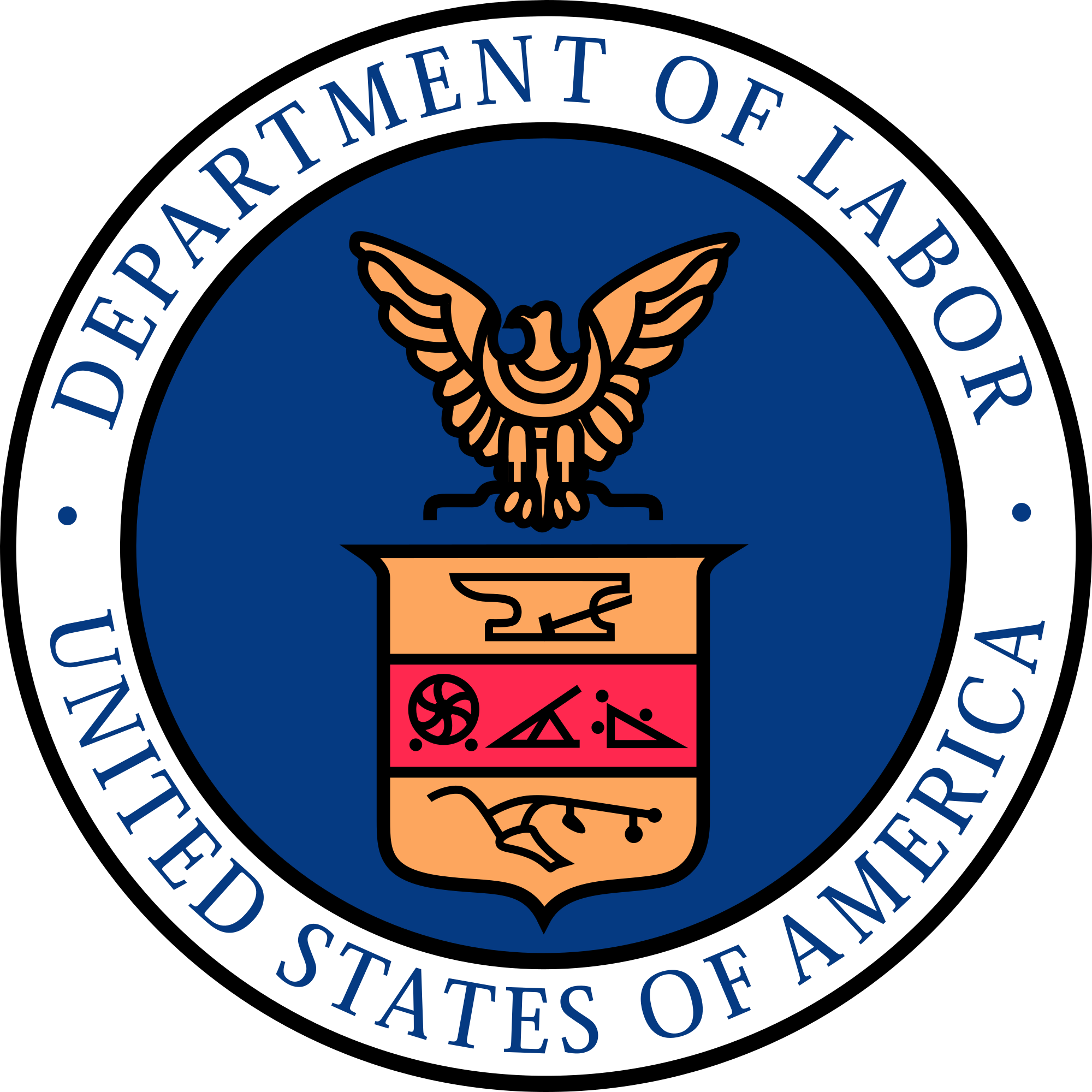
The Inflation Adjustment Act requires certain agencies to adjust some of the civil monetary penalties (and provides a cost-of-living formula) depending on the statute in question and notwithstanding the requirement in Section 553 of the Administrative Procedure Act otherwise requiring Rulemaking (public notice and the solicitation of comments from the public).
Applicable Agencies
The affected USDOL Agencies that issue civil money penalties include:
- Employment and Training Administration
- Workers Compensation Programs Office
- Wage and Hour Division
- Occupational Safety and Health Administration
- Mine Safety and Health Administration
The Final Rule lists the revised rates by Agency and statute beginning on page 2333 in the PDF version of the Federal Register.
SUBSCRIBE.
Compliance Alerts
Compliance Tips
Week In Review (WIR)
Subscribe to receive alerts, news and updates on all things related to OFCCP compliance as it applies to federal contractors.

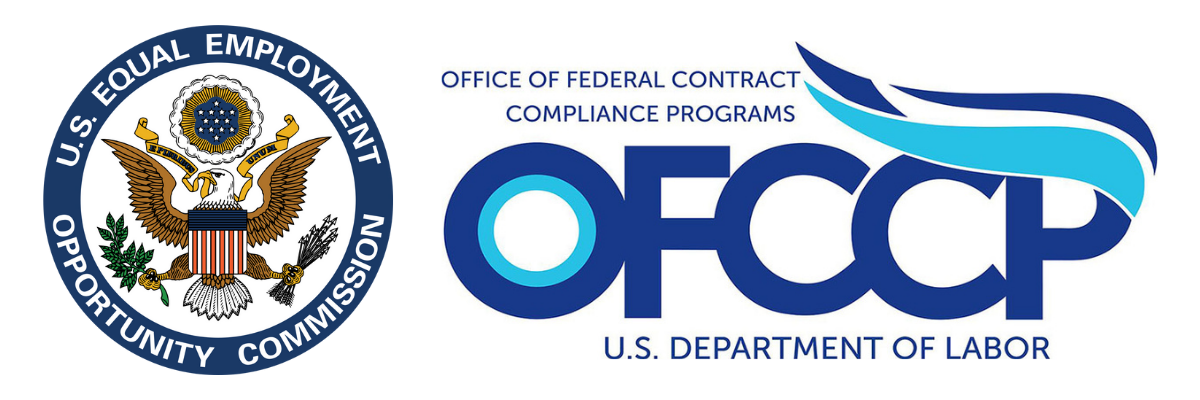


Thank you John for keeping us up to date. Your updates are clear , concise with a bit of humor. I appreciate you, Tim